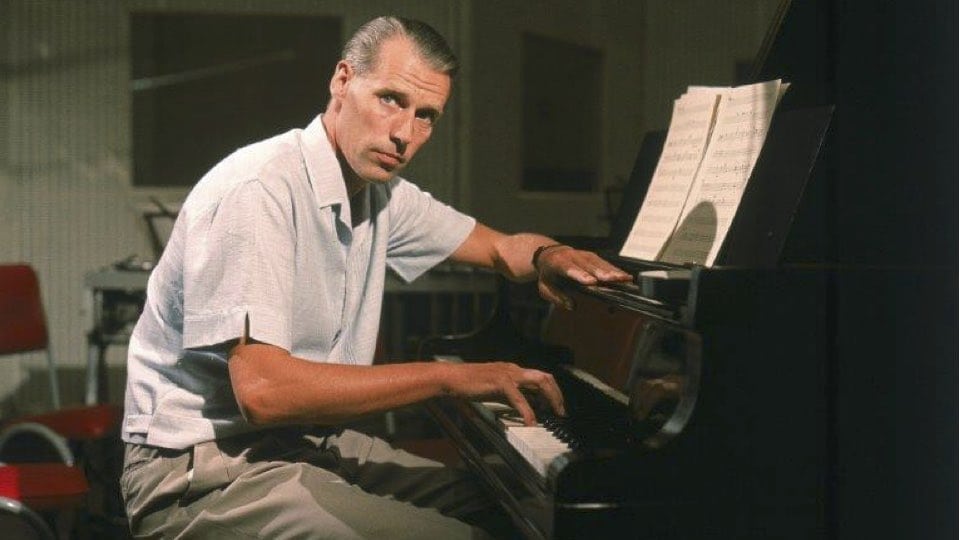Among the many, many strengths he brought to The Beatles, George Martin had a bag of production tricks that added distinctive sonic touches to their records. One of these, the “wind up” piano, appeared on nearly every Beatle album, from the first to the last. Back in the days of analog recording, it took some genuine ingenuity to achieve effects that would take just a push of a virtual button today. Our resident “Beatleologist,” Scott Freiman, reveals the secret of the wind-up piano in this latest video. To dig even deeper, explore Scott’s two new films on the Beatles early years.
– CultureSonar
Photo George Martin via Getty Images




This is cool, but it begs the question: why? Why not just play it “a tempo” to begin with? What problem was being solved by doing this?
Two reasons: one. It was easier to play things with the tape player running at half speed. Two, it gave the recording a different sound than if it had been recorded at normal speed.
Different tonality.
We do the same thing today with a feature called sample shifting which essentially retunes all the notes on the fly to achieve different sonorities.
These songs are ear candy. One reason is bcause they are impeccably in time. The rhythm of the instruments are super-humanly in time. But not in a robotic way. It still has the human phrasing, but it’s as if a band of squirrels were playing. It borders on being cartoonish. This technique is one of the ways that they achieved this. It brings the listener back to a time when they were younger and things came at you fast.
This is a great video! I love how you’ve broken it down so that one can hear the 7.5 IPS versions in isolation. Thanks for putting this together. I would love to see something else like this… perhaps a breakdown of The Beatles’ use of backward tape manipulation i.e., the solo in ‘I’m Only Sleeping’ or the vocal outro of ‘Rain’. Either way thanks again!
I think the reason George Martin liked it was it sounds more lo-fi, almost like that 8-bit video game music some years later. It’s fresh and unexpected.
For me, a person with virtually no musical ability/knowledge, I have the same questions as Tom above. I think this story would have given more insight into the wind up piano technique if you had played at least one example of a piece using the technique, and then the same piece actually being played at full speed at the higher octave. While it was I interesting to hear the original recordings played at the originally recorded speed, then in the released recordings, the story did nothing to demonstrate what the technique offered in terms of changing the sound over simply playing at normal speed at the higher octave and recording it at normal speed.
A quick Google search of any of these songs will point you to many recordings played an octave above and twice the speed of the originals. They’ll even show YOU how to play them that way…
[…] 9. “A Staple of the Beatles’ Toolbox: The “Wind Up” Piano” […]
Helped me figure out how some Beatles things were done. Especially the solo on A Hard Day’s Night, which I’ve wondered about since I was 8 years old.
Fascinating! Well done. I don’t understand what the other comments say is missing from this video. Not having known this technique before I now understood it perfectly. I’m not sure the average Beatle fan knows how much Sir George contributed to the Beatles’ artistry and mystique. If I could make a request … I would like to see a video on the production of “I Am The Walrus,” a song that is as edgy and bizarre as it was in 1976. Remarkable!